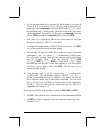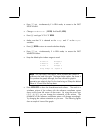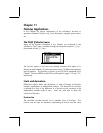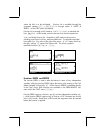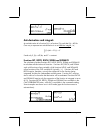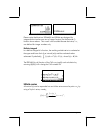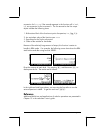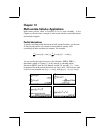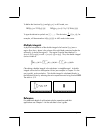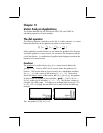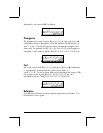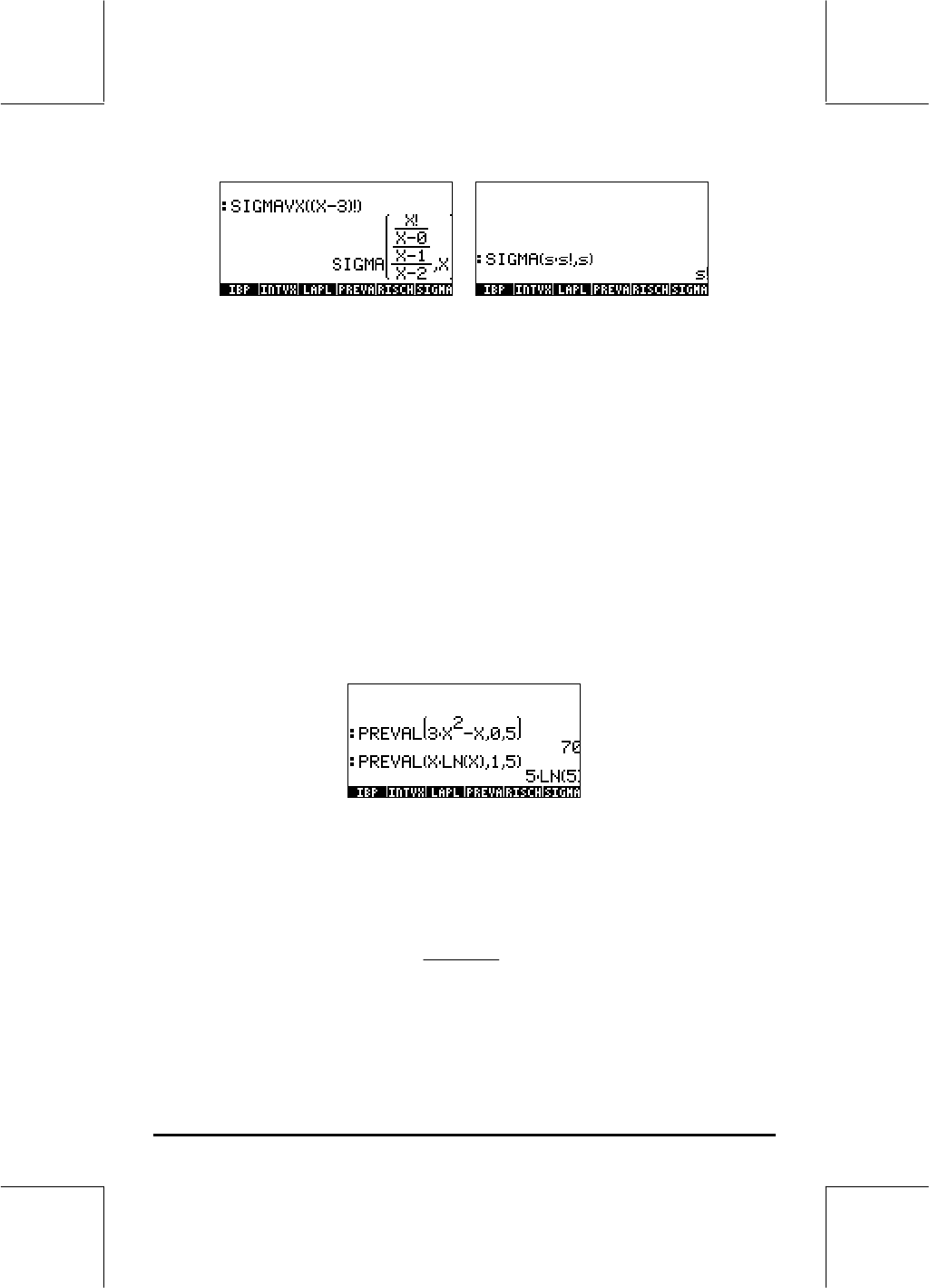
Page 11-4
Please notice that functions SIGMAVX and SIGMA are designed for
integrands that involve some sort of integer function like the factorial (!)
function shown above. Their result is the so-called discrete derivative, i.e.,
one defined for integer numbers only.
Definite integrals
In a definite integral of a function, the resulting anti-derivative is evaluated at
the upper and lower limit of an interval (a,b) and the evaluated values
subtracted. Symbolically,
),()()( aFbFdxxf
b
a
−=
∫
where f(x) = dF/dx.
The PREVAL(f(x),a,b) function of the CAS can simplify such calculation by
returning f(b)-f(a) with x being the CAS variable VX.
Infinite series
A function f(x) can be expanded into an infinite series around a point x=x
0
by
using a Taylor’s series, namely,
∑
∞
=
−⋅=
0
)(
)(
!
)(
)(
n
n
o
o
n
xx
n
xf
xf
,



